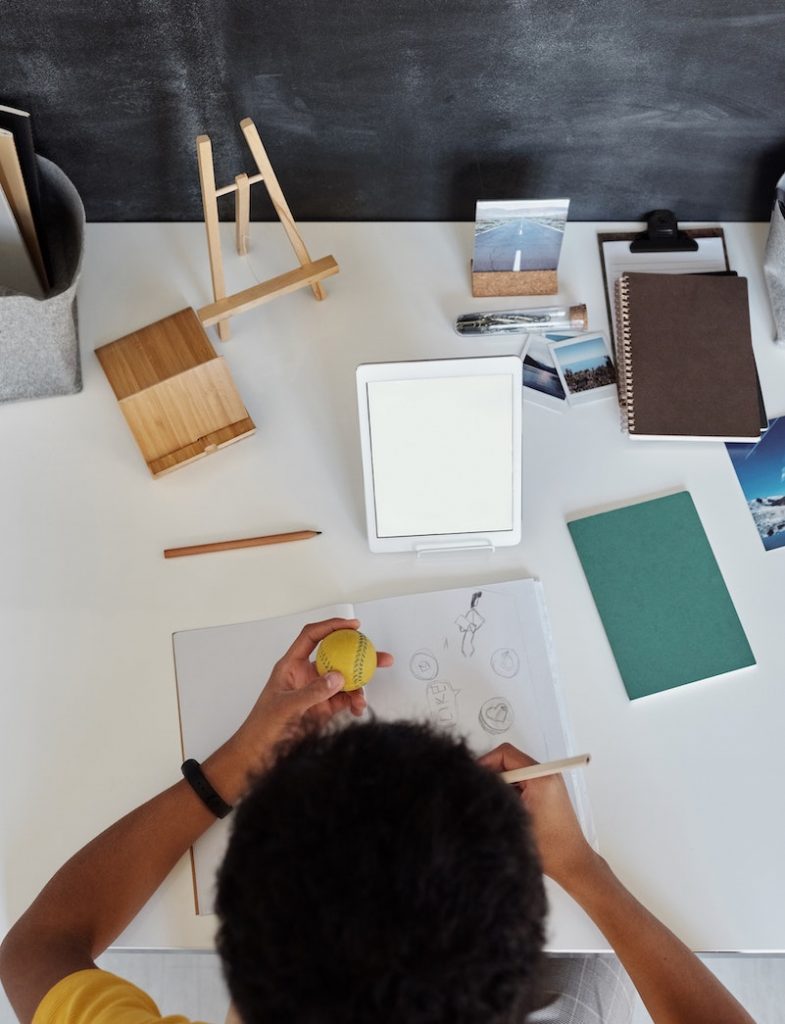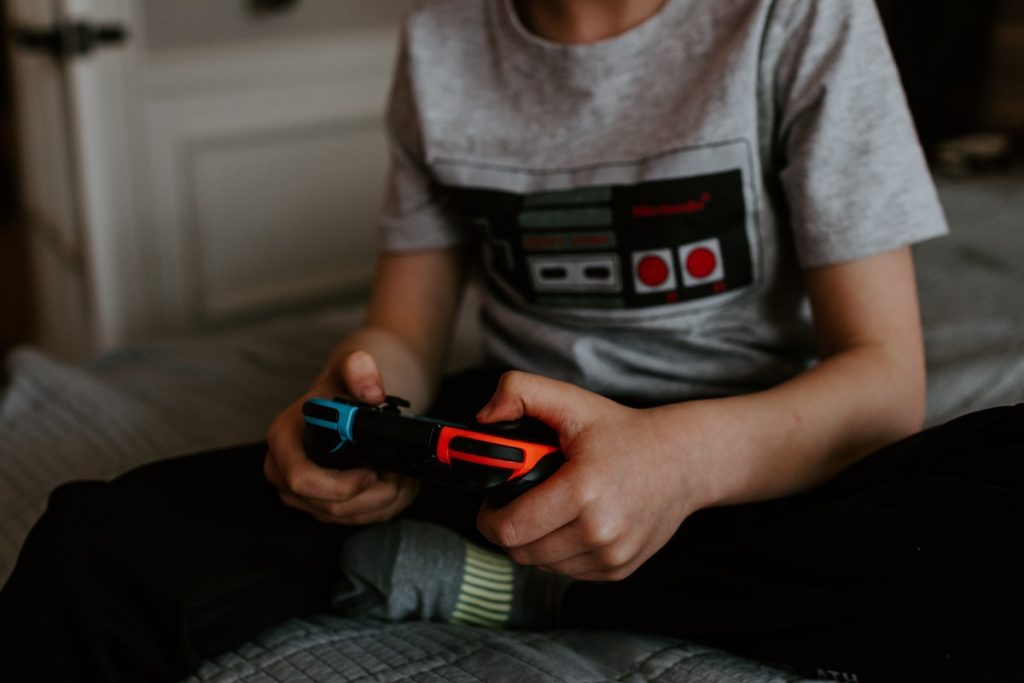
There’s a scene at the beginning of The Incredibles 2 in which Elastagirl races time to save a runaway high speed train from hurtling — backwards — off the edge of an unfinished track. When she’s confident all passengers are saved, she marches to the front of the train to confront the problem and finds the driver hypnotized by a screen. It’s the stuff parents’ nightmares are made of: ambitions and creativity and blissful childhoods co-opted and sent streaking toward instant death at the hands of mindless screen time.
Our kids’ media intake is the source of a giant portion of our worry and guilt as twenty-first century parents. How much is too much? How little is too little? Are their brain cells withering with each minute of Sesame Street? Is their social aptitude declining with each thumbed move of a pixelated character?
Anxiety about screen time comes from a deep desire to raise healthy kids. We want nothing less than for our children to grow up to be well-rounded, capable, empathetic humans, and according to expert after expert, screen time will ruin their chances. Kids with too many hours of on-screen entertainment could develop (according to panicky Google searches) obesity, sleep problems, anxiety and depression, educational delays, and behavioral challenges.

But don’t race off to change the passcodes or smash the Xbox just yet. We suspect there’s a balanced response to the idea of screen time and let’s talk straight: Pixar and Playstation are a godsend when your child falls ill on the day you’re launching a big project at work. Or if you happen to find yourself attempting to get something—anything!—done while working at home in the midst of a global pandemic with the kids in the next room, the dog on the floor next to you, dinnertime looming and deadlines fast approaching.
Interestingly enough, we’ve seen the research begin to shift to accommodate thoughtful media intake for kids instead of blanket statements about screen time. And here’s the thing: quality over quantity seems to hold true with technology as it does for so many other things. Our kids use screens to complete remote learning assignments from their teachers, learn to code, email their grandparents during quarantine, research volcano formation, build a city from the ground up, spy on pandas eating lunch at the Smithsonian Zoo, listen to bird calls, and learn to draw like a pro. Sounds a lot like the way we grownups use screens, doesn’t it?
There are plenty of unhealthy ways to consume media—at any age—and there are plenty of valuable ways too. Lisa Guernsey is a researcher and author studying technology and education and reminds us that it’s not so much a question about the amount of time our kids’ eyeballs are staring at screens, but how much mindless or sedentary or alone time is spent with a screen. She offers guidelines to help us be mindful about our kids media intake instead of banning screens altogether. It’s about keeping a level head, knowing the particular strengths and challenges of each kid, managing our own screen use, and using technology to support healthy habits and creativity—for ourselves and our children.

When evaluating your child’s use of digital technology, use Guernsey’s 3 Cs to guide you. There’s even a quiz to help you score the media experiences of your child and help if you’re concerned.
Content
What is the content on the screen? Is the media troubling or violent or age-appropriate? Does it stimulate off-screen creativity and play?
Context
Is the media taking the place of calming activities or inhibiting social interactions like mealtimes? Are you using media jointly to play or watch together? Is your child creating or consuming?
Child
Perhaps most importantly, observe your child’s interactions with media and how they’re affected by it. Be mindful that each child can respond differently. Are particular media experiences assisting your child’s development? Have you found scenarios that aren’t helpful? Is your child engaged by what’s on-screen? Do they talk about what they are watching or playing?
It’s clear from Guernsey and other new research that screen use may not be as horrific as we’ve been thinking all along. Scientific American writes about a new Oxford study that finds the panic over screen use in teenagers to be far more overstated than necessary. “Most of the evidence suggesting digital technologies negatively impact young people’s psychological well-being comes from analysis of large, publicly available data sets,” write the authors. “Those are valuable resources but susceptible to researcher bias.” Using such large sets of participants means that small effects are easy to identify—and publish. Negative findings receive far more press attention and consequently freak us parents out. This new study reveals that, “at a population level, technology use has a nearly negligible effect on adolescent psychological well-being” and goes on to reveal the effect of teenage technology use on emotional well-being as the same as eating potatoes. You know what’s worse? Wearing glasses.
All the science and statistics and worrying aside, some of the best stories in human history have been made on a screen. We quote movie lines, create fan clubs, and designate holidays to celebrate favorite films. Some of the most rewarding moments of parenting happen when we can introduce our kids to our favorite shows or movies or video games!

Screen time doesn’t have to be the guilt-inducing enemy of a fine childhood. Use a thoughtful approach to what, when, and how your kids take in media and set a good example by mastering your own approach to screens. And stop freaking out! The kids will be ok, and maybe our sanity during quarantine will be too.
